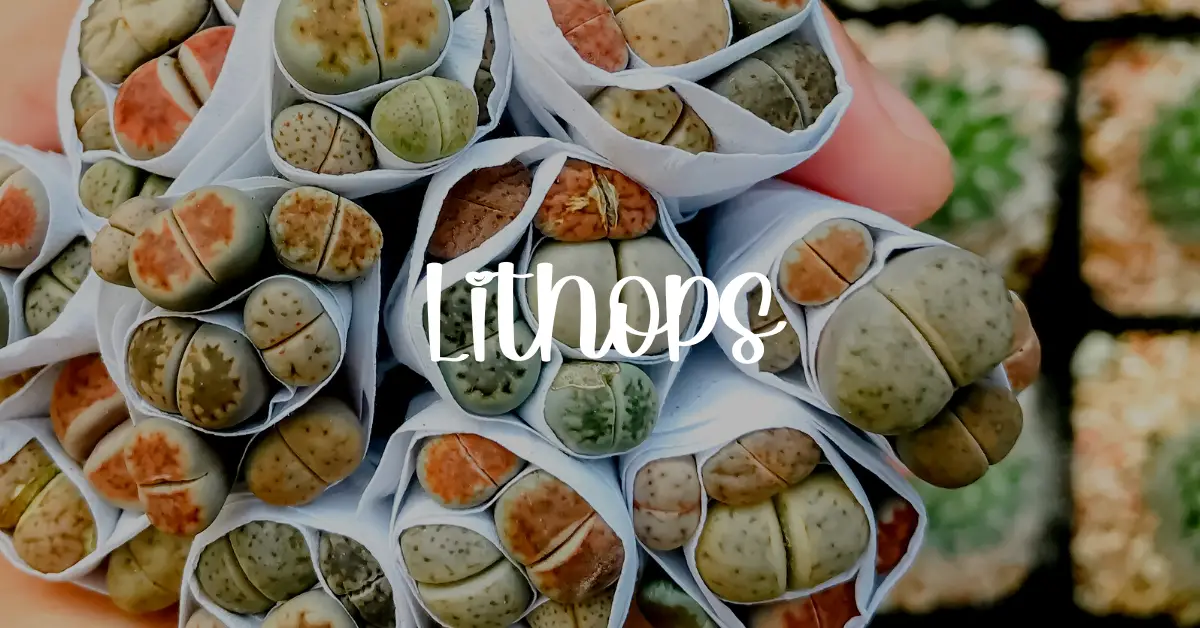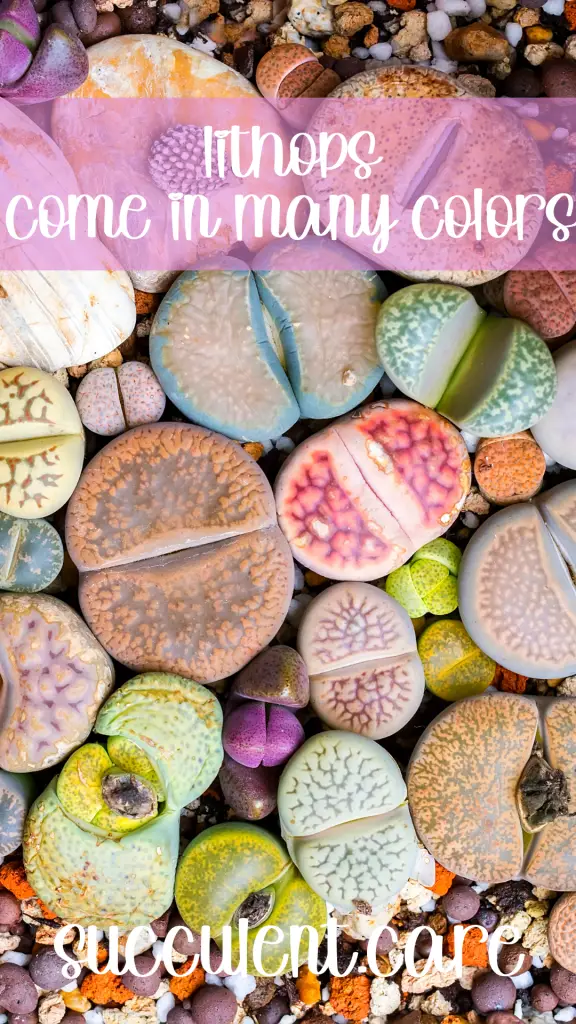
Lithops, also known as “pebble plants” or “living stones,” are a type of small, succulent plant native to the arid regions of southern Africa. These fascinating plants are known for their unique, stone-like appearance and ability to blend in with their surroundings, which helps them survive in their harsh, desert environment. They (also known as “living stones”) are a type of mesemb, or a member of the family Aizoaceae. In this guide, we will discuss the unique features of lithops plants and provide tips for caring for and propagating these interesting succulent plants.
What is a Mesemb?
Mesembs, also known as “mesembs” or “mesembryanthemums,” are a group of flowering plants that are native to the arid regions of southern Africa. They are members of the family Aizoaceae, which includes more than 2,000 species of succulent plants.
Mesembs are known for their colorful, daisy-like flowers and thick, succulent leaves, which are often arranged in a rosette pattern. They are adapted to survive in arid environments, and are able to store water in their leaves and stems, allowing them to tolerate prolonged periods of drought.
Important Info for All: Drainage Hole at the Bottom of The Pot: Do Succulents Need Them? The Answer Might Completely Shock You!
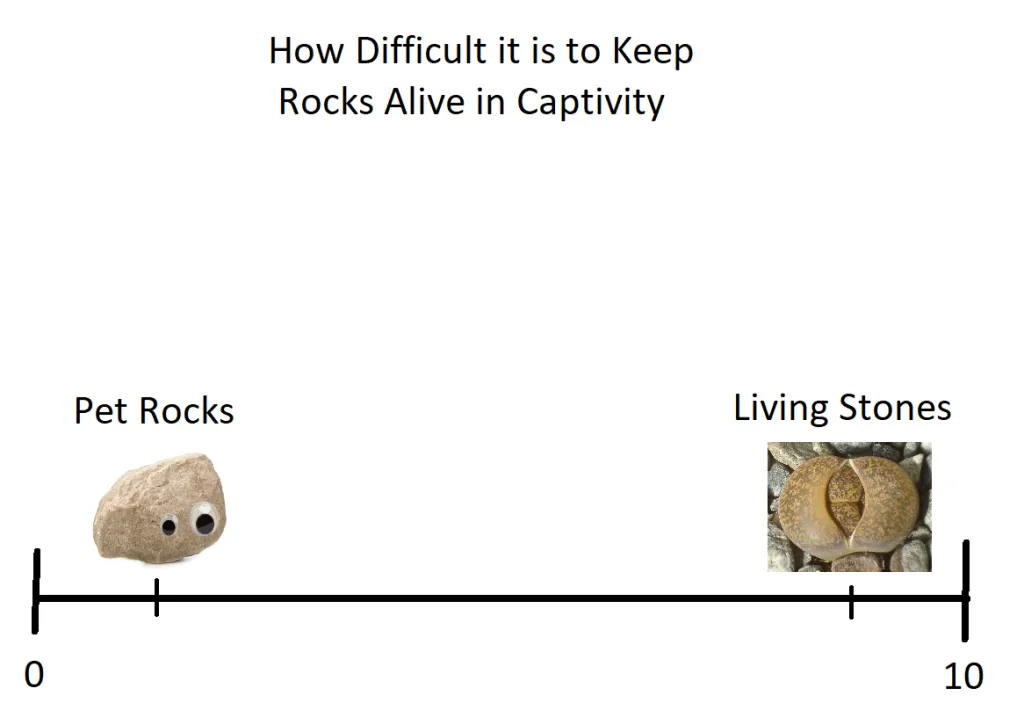
Mesembs are popular as ornamental plants, and are often grown as indoor or outdoor plants in warm, sunny locations. They are relatively low-maintenance and can be grown in a variety of soils, as long as they are well-draining. Mesembs are also popular with collectors, as many species are rare and have unique, attractive characteristics.
There are many different species of mesembs, including ice plants, vygies, lampranthus, delosperma, and aizoas. Some common species of mesembs include Aptenia cordifolia (heart-leaved ice plant), Carpobrotus edulis (Hottentot fig), and Delosperma cooperi (ice plant).
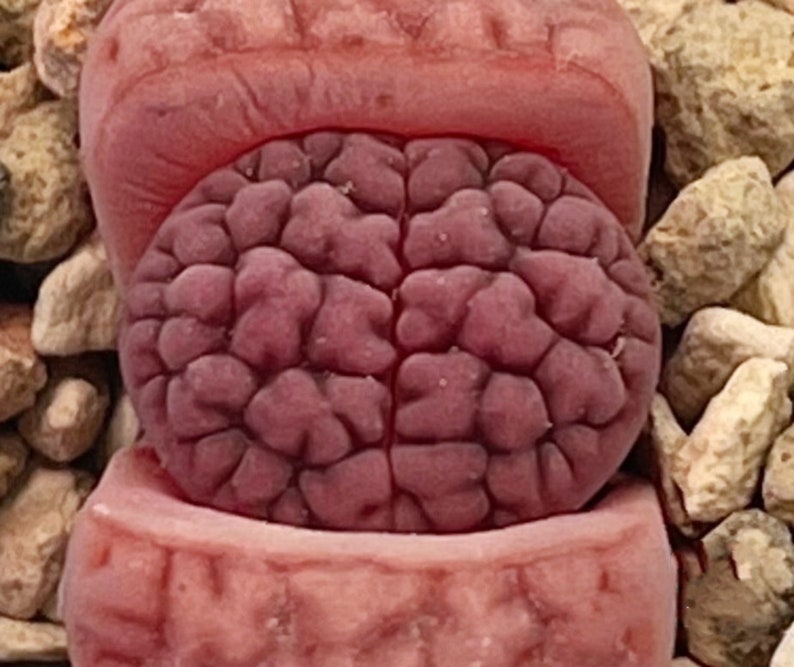
Everything you need to know about: Root Rot in Succulents: How to Identify and Treat the Problem
Unique Features
Lithops plants are small, slow-growing succulents that are native to the arid regions of southern Africa. They are known for their unique, stone-like appearance and ability to blend in with their surroundings, which helps them survive in their harsh, desert environment.
They have a compact, fleshy growth habit and typically produce just a single pair of leaves. These plants have thick, fleshy leaves that are fused together, forming a single, rounded body that resembles a stone or pebble. The leaves are often a mottled or striped pattern, with shades of green, brown, red, or yellow, which helps the plant blend in with its surroundings.
You might also like: Taking Care of Succulents Inside
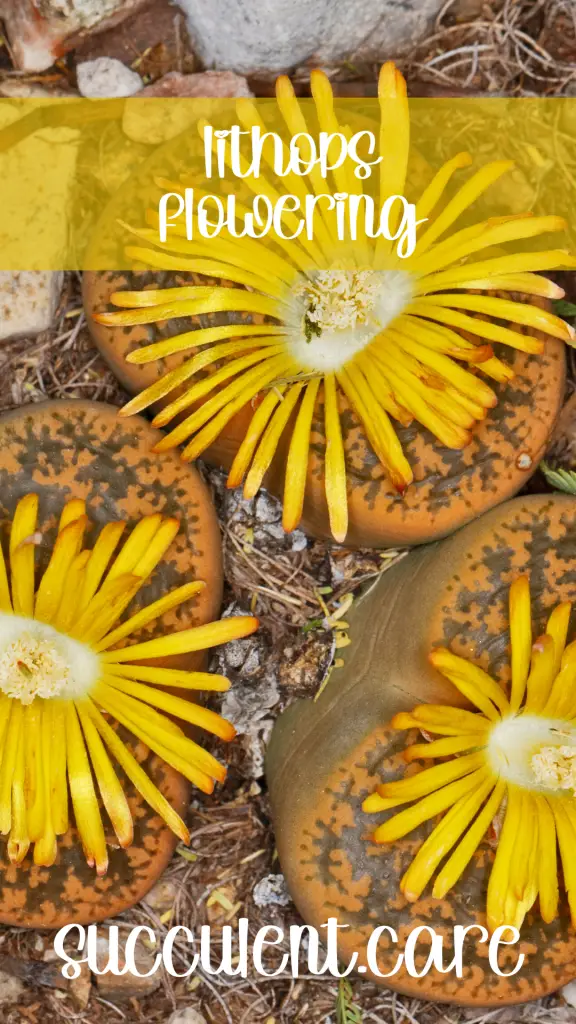
In addition to their unique appearance, they are also known for their ability to survive in extreme conditions. They are able to store water in their leaves and stems, which allows them to survive prolonged periods of drought. They are also able to tolerate extreme temperatures, making them a popular choice for indoor and outdoor gardens in a variety of climates.
Can’t Miss: Euphorbia alluaudii ‘Madagascan Fire Plant’: A Comprehensive Care Guide
You might like: Echeveria desmetiana: A Comprehensive Guide to This Classic Beauty
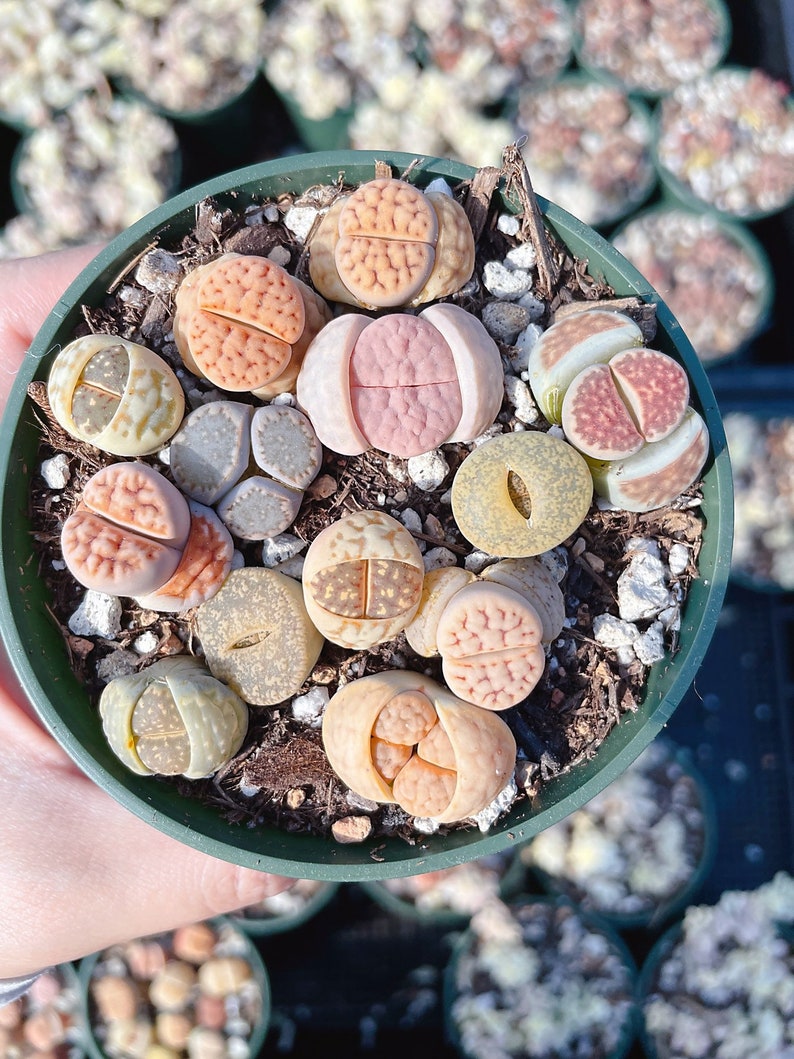
Caring for Lithops Plants
Lithops plants are relatively low-maintenance and can thrive with minimal care. However, there are a few key factors to consider when caring for these unique succulent plants:
- Light: They prefer bright, indirect light, but they can tolerate partial shade. Avoid placing them in direct sun, as this can cause the leaves to become sunburnt.
- Water: They do not require frequent watering, and in fact, overwatering can be a common problem for these plants. It is generally recommended to water them once every two to four weeks, depending on the humidity and temperature of the environment.
- Soil: As with all succulent plants, it is important to use a well-draining soil mix for living stones plants. A mix of cactus soil and perlite or pumice works well, or you can make your own mix by combining equal parts potting soil, perlite, and sand. Avoid using soil mixes that retain moisture, as this can lead to overwatering.
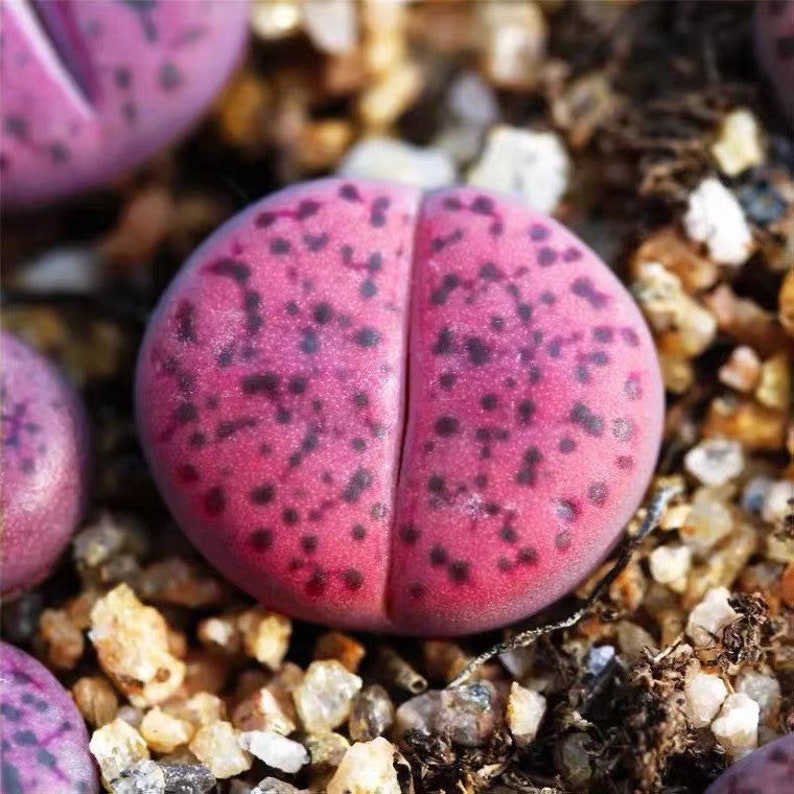
You might also like: Succulent Death Bloom (Sounds like a metal band.)
- Fertilizer: They are generally not heavy feeders and do not require a lot of fertilization. A light application of a balanced, all-purpose fertilizer once a month during the growing season is sufficient. Avoid overfertilizing, as this can lead to leaf burn and other problems.
- Repotting: Living stones are slow-growing and do not require frequent repotting. Repot the plant only when it becomes overcrowded or the pot becomes too small for the plant. Choose a pot that is slightly larger than the current pot and use a well-draining soil mix.
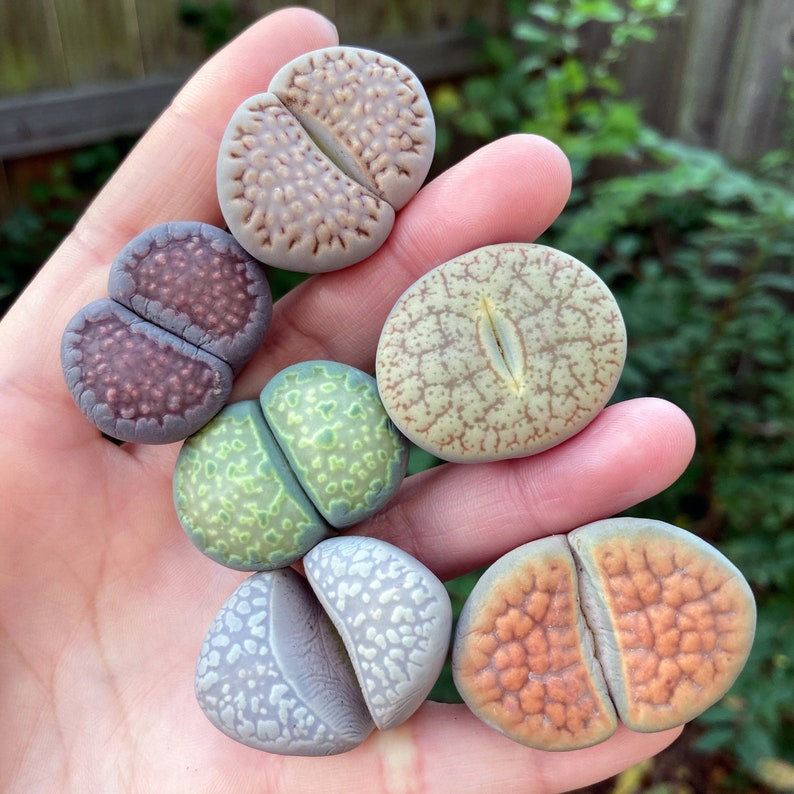
Propagating Lithops Plants
Lithops plants are generally propagated from seeds or offsets. To propagate from seeds, follow these steps:
- Sow the seeds in a well-draining soil mix and cover with a thin layer of sand.
- Water the soil lightly, being careful not to wash away the seeds.
- Place the pot in a location with bright, indirect light and a temperature between 70-75°F.
- Keep the soil moist but not soggy, and water the plant every few days or as needed.
- Once the seeds have germinated and the seedlings have developed their first set of leaves, gradually reduce watering and allow the soil to dry out between waterings.
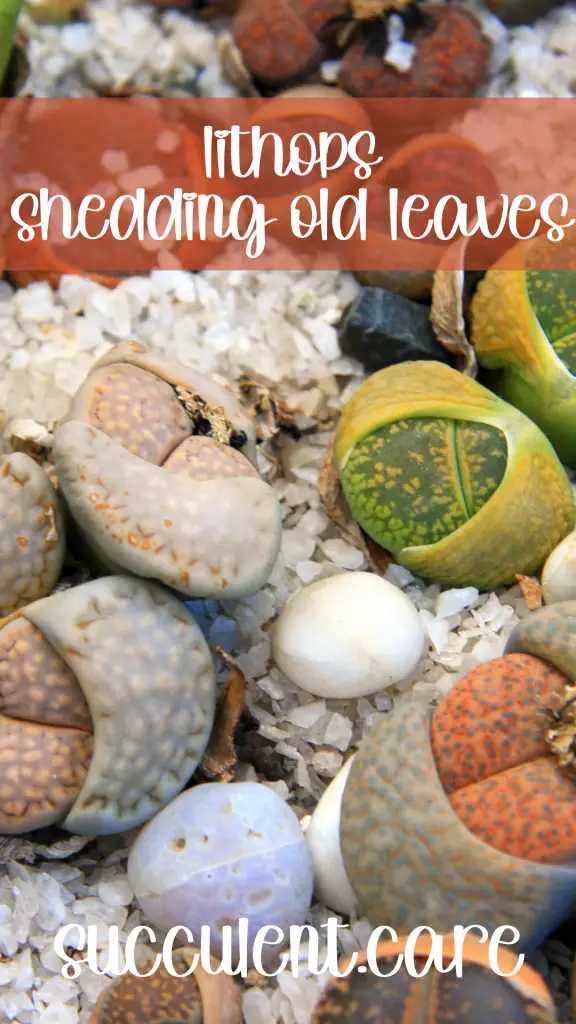
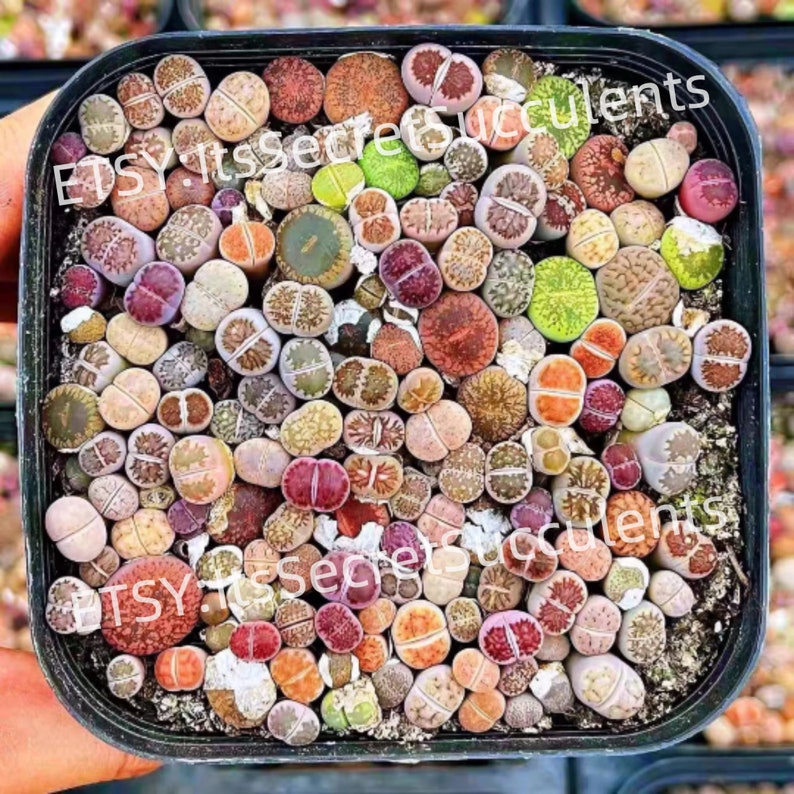
To propagate from offsets, follow these steps:
- Carefully remove the offsets from the parent plant, being sure to leave a small portion of the root attached.
- Plant the offsets in a well-draining soil mix and water lightly.
- Place the pot in a location with bright, indirect light and a temperature between 70-75°F.
- Keep the soil moist but not soggy, and water the offsets every few days or as needed.
- Once the offsets have rooted and established themselves, gradually reduce watering and allow the soil to dry out between waterings.
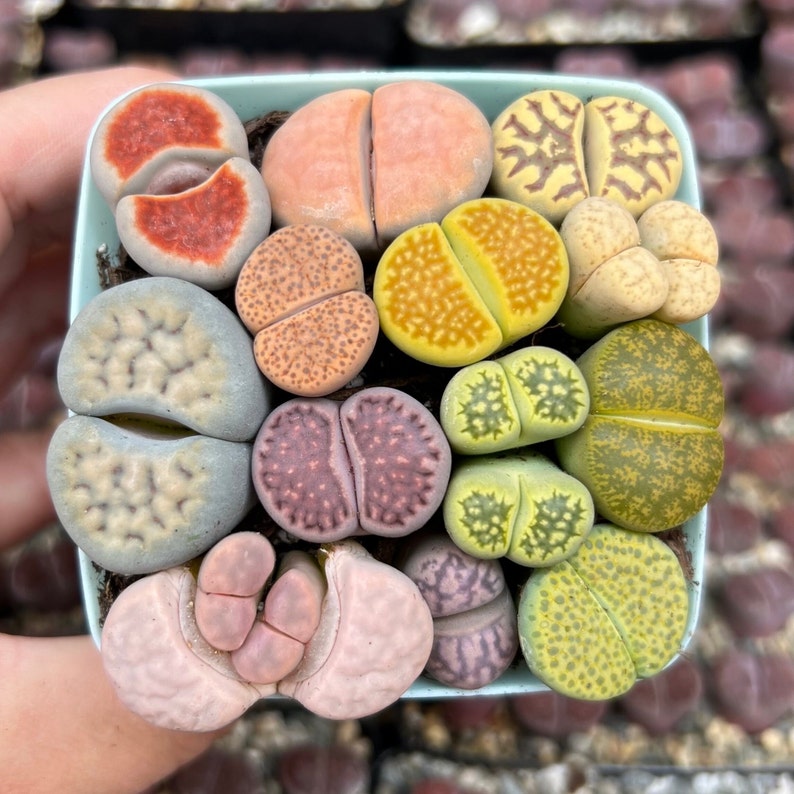
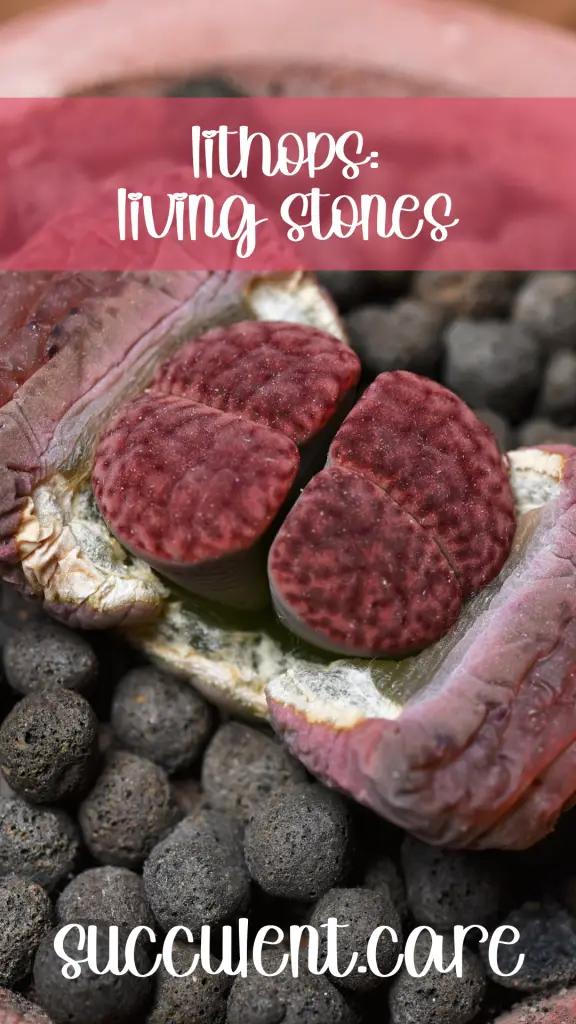
How do you tell when lithops going into dormancy?
Lithops, also known as “living stones,” naturally go through a dormant period during the summer months. During this time, the plant will reduce its water consumption and slow down its growth. Here are some signs that your lithops is going into dormancy:
- The leaves become less plump: As the plant reduces its water intake, the leaves will become less plump and more shriveled in appearance.
- The plant stops growing: Lithops typically grow during the cooler months and slow down or stop growing during the summer.
- The old leaves start to dry up: During dormancy, the plant will start to reabsorb the nutrients from its older leaves, causing them to dry up and wither away.
- The plant may change color: Some lithops varieties may change color during dormancy, with some becoming more red or brown in color.
It’s important to avoid watering your lithops during its dormant period, as this can cause the plant to rot. Instead, wait until the new growth starts to appear in the fall before resuming regular watering.
When do you water Lithops?
Balancing the delicate dance of Lithops watering is both an art and a science. It’s crucial to strike the right balance, as both overwatering and underwatering can spell disaster for these remarkable succulents. While overwatering can swiftly lead to their demise, underwatering, although slower, can be equally lethal. Our focus here lies on mature Lithops, as the watering needs of seeds and seedlings differ significantly.
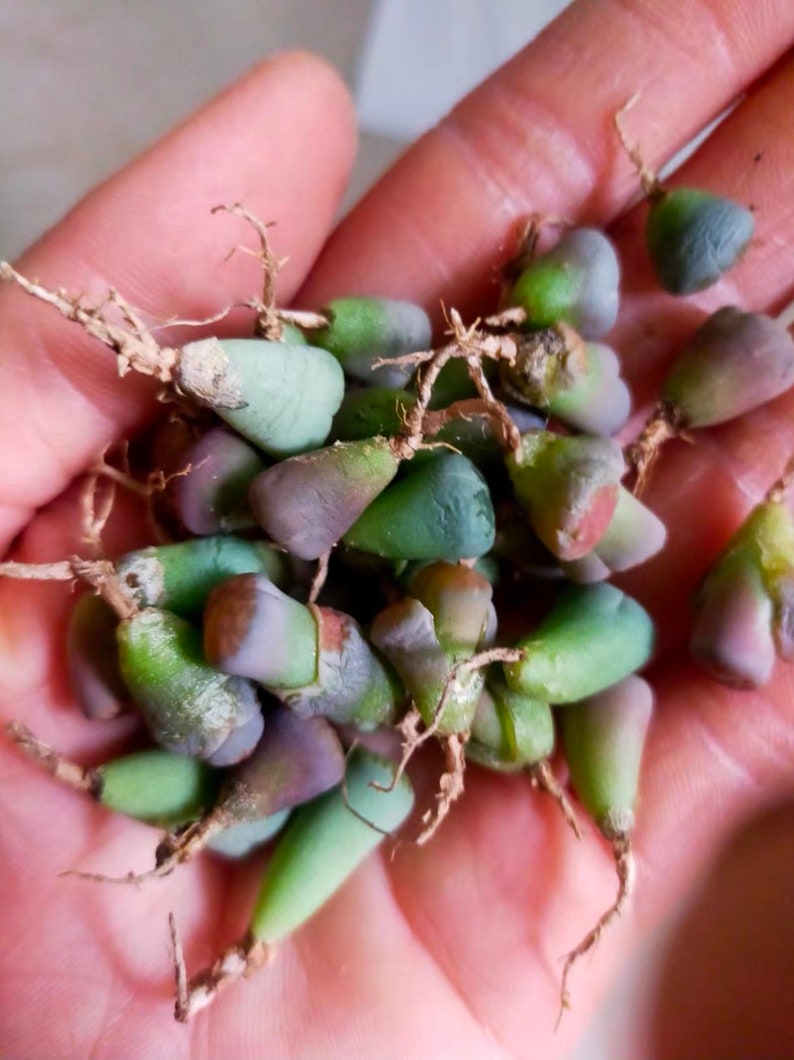
Decoding the Seasonal Cycle
A pivotal factor in mastering Lithops watering lies in deciphering their seasonal cycle. Timing is everything, and watering at the wrong phase in their growth journey can be a fatal misstep. However, fear not, for with the right knowledge and proper care in other aspects—such as soil choice, pot selection, and lighting—your Lithops can thrive.

Let’s break down the year into two distinct parts: the dry season and the wet season.
1. Dry Season: This phase commences as the Lithops bloom dries up, extending through the winter months, and concludes when the plant’s old leaves are absorbed. During this period, refraining from watering is paramount. As with any rule, exceptions exist—certain species or those dwelling in arid environments may necessitate occasional misting or minimal water intake.
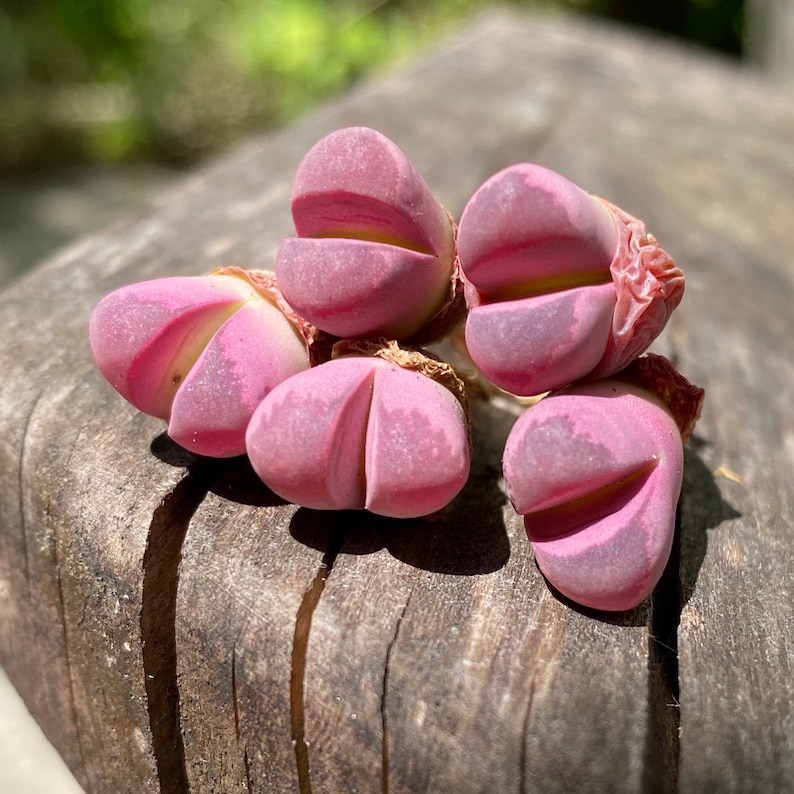
2. Wet Season: As the dry season gives way to the wet season, a crucial shift occurs. The wet season initiates with a thorough watering or soaking, stimulating root growth. After this initial watering, vigilant observation is essential. Dehydration signals manifest as side wrinkling, while window wrinkling signifies an urgent thirst. The frequency of watering hinges upon a multitude of conditions, and distinct Lithops species exhibit varying water requirements. Crafting a personalized watering schedule is a skill every Lithops enthusiast must cultivate.
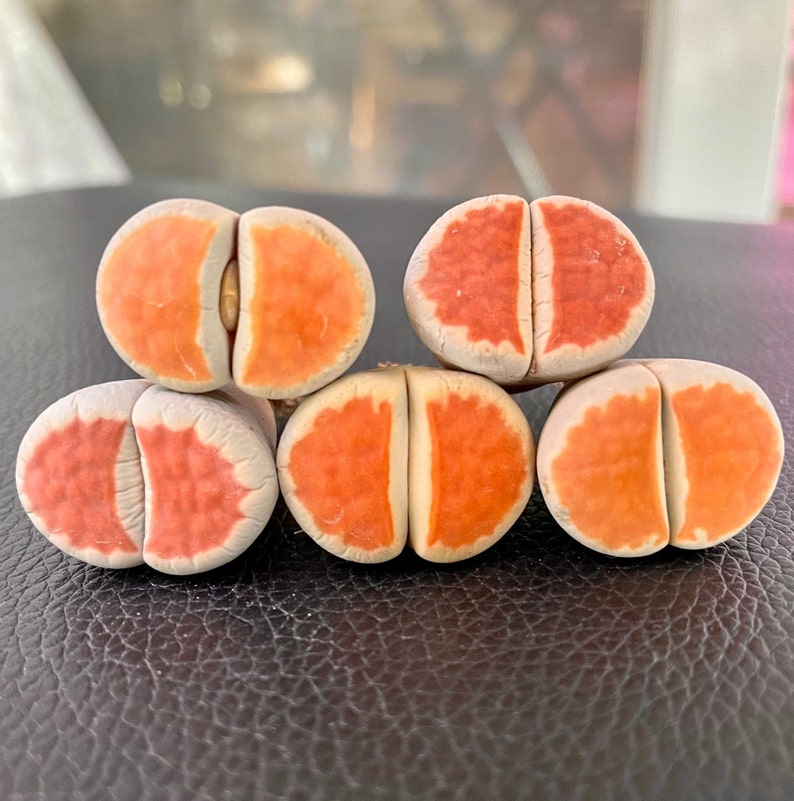
Navigating the Dry Season: No Watering Required
The dry season is a critical juncture in the Lithops’ annual cycle. As winter’s chill sets in and the memory of their vibrant blooms begins to fade, withholding water is key. Lithops are masters of survival, evolved to endure prolonged periods of drought. During this phase, the absence of watering is a deliberate choice, mirroring their native arid habitats.
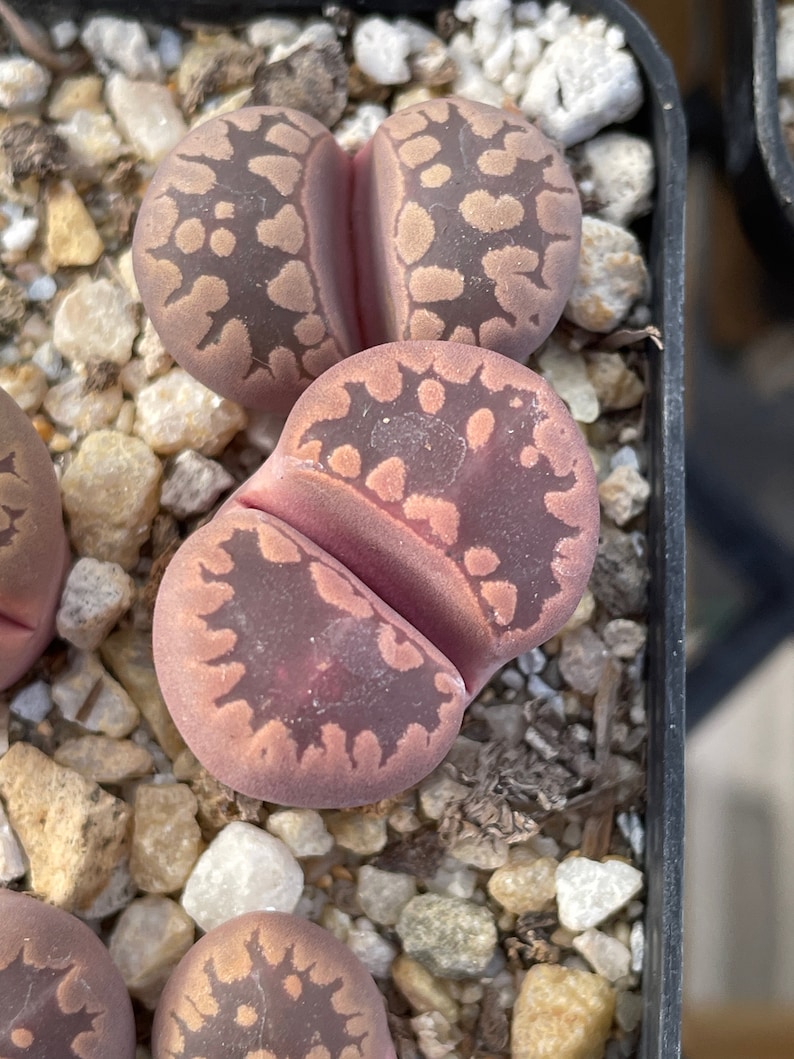
Exceptions, however, add nuance to this rule. Certain Lithops species, adapted to particularly arid niches, may benefit from occasional misting or minimal hydration. As a conscientious Lithops caregiver, keen observation and a deep understanding of your specific species can guide you in making informed decisions.

Embracing the Wet Season: Nurturing New Growth
As the dry season bows out, the wet season takes center stage, marking a transformative period in your Lithops’ life cycle. Kickstarting this phase with a thorough watering or indulgent soak serves as a catalyst for robust root development. Your vigilance post-watering is crucial—detecting signs of dehydration is your superpower.
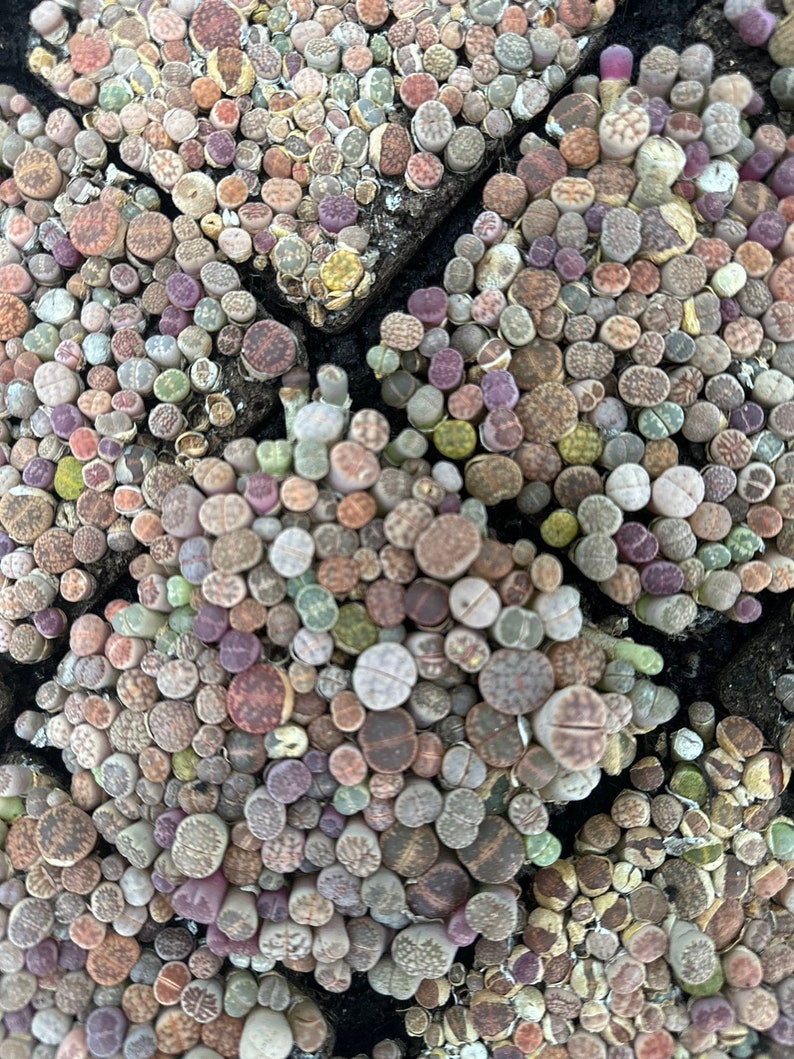
Side wrinkling, a visual cue, is generally benign, indicating the plant’s resilience to conserve moisture. However, when window wrinkling occurs, your Lithops is sounding an SOS. Windows, the translucent patches atop Lithops, serve as portals to their inner water reserves. Wrinkles here indicate a pressing need for hydration.

Pro Tip: The frequency of watering varies widely based on environmental conditions and Lithops species. The lithops karasmontana, for instance, might demand more frequent watering than its lithops optica counterpart. A comprehensive understanding of your Lithops’ unique needs is your compass.
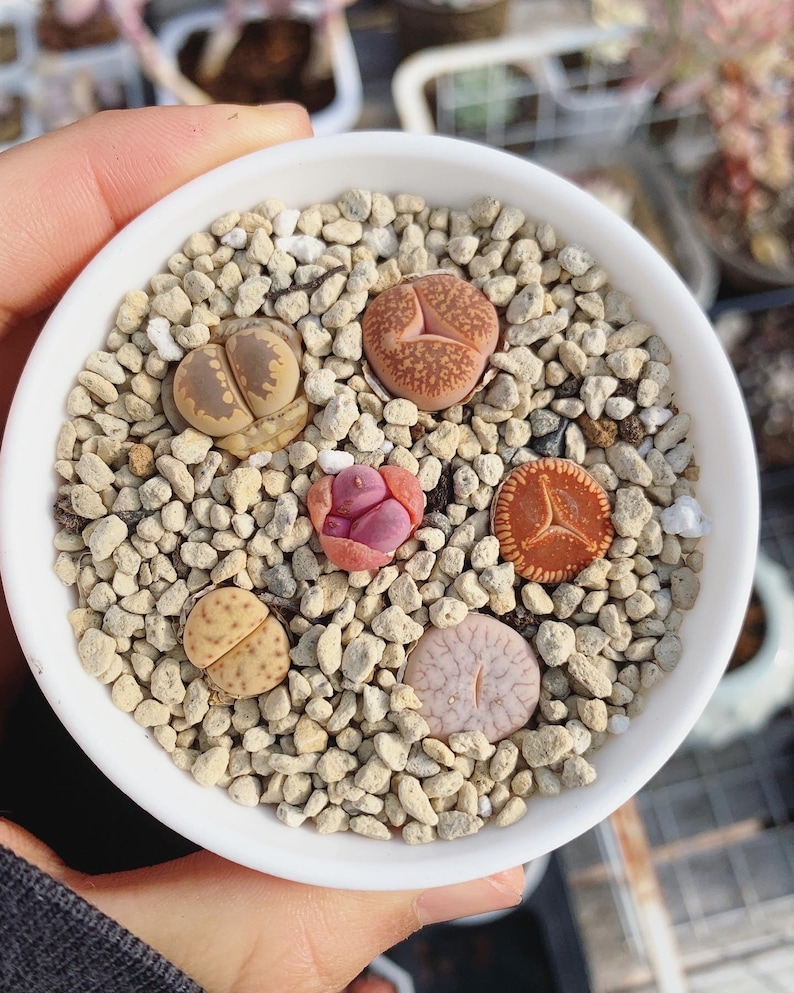
Crafting Your Watering Regimen
A successful Lithops journey hinges on mastering the delicate choreography of watering. There is no one-size-fits-all solution; instead, you’ll craft a customized watering regimen tailored to your specific Lithops species and local conditions.
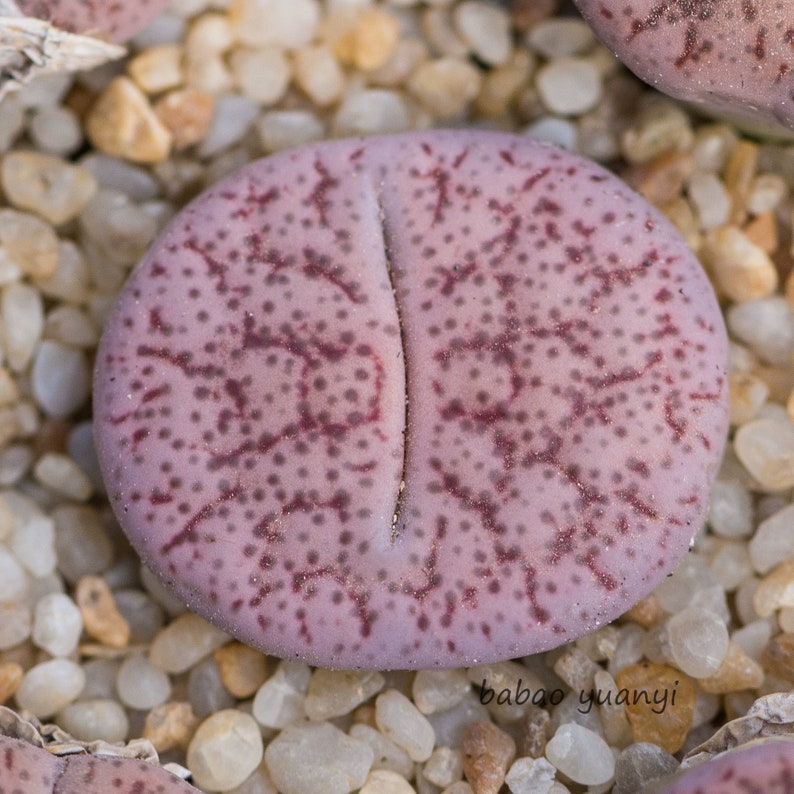
- Know Your Lithops: Familiarize yourself with the distinct characteristics of your Lithops species. Research their native habitats, growth patterns, and water requirements. This knowledge is your cornerstone.
- Embrace Observation: Become an astute observer of your Lithops’ behavior. Watch for visual cues such as wrinkling, color changes, and overall appearance. Your Lithops will communicate its needs—pay heed.
- Environmental Variables: Factor in variables like temperature, humidity levels, and light exposure. These elements influence your Lithops’ water needs and dictate the frequency of watering.
- Trial and Adjustment: Your initial watering schedule might need tweaking. Be prepared to experiment and adjust based on your Lithops’ response. Over time, you’ll hone your intuition.
- Hydration, Not Saturation: Remember, it’s hydration we seek, not saturation. Aim for thorough yet controlled watering sessions that mimic natural rainfall.
- The Power of Touch: Develop a tactile connection with your Lithops. Gently touching the plant can offer insights into its moisture content. Experience will refine your touch.
Lithops Lifecycle: A Guide to the Yearly Growth Stages
Mature Lithops follow an annual growth pattern tied to their natural seasons in southern Africa. While timelines may vary by species, the basic cycle remains the same.
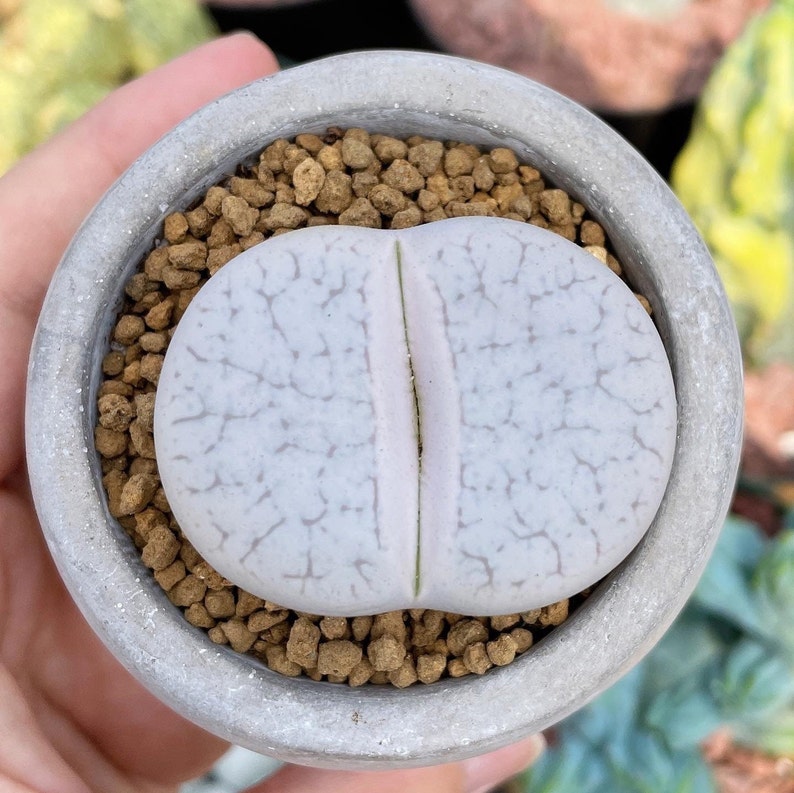
Autumn
As temperatures cool in autumn, Lithops shift into flowering season from late summer through fall. New growth forms a bud that pushes through the outer leaf crease, blooming with white or yellow flowers. Seed pods may follow. After blooming, underground development of the next leaves begins.
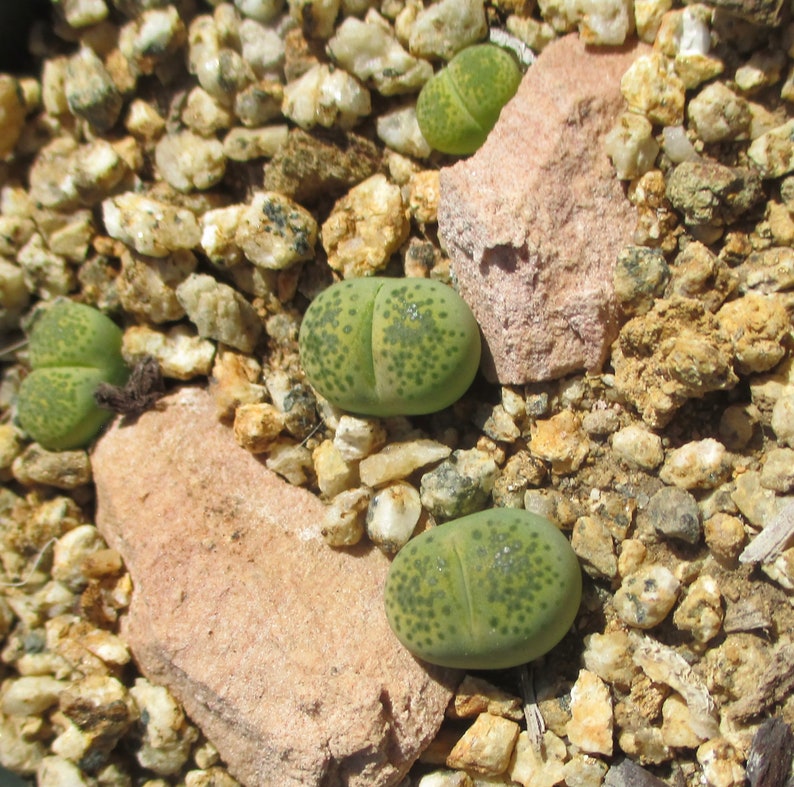
Winter
Through winter, the emerging new leaves develop nourished by stored nutrients and water from the old leaves above. The roots sustain themselves during this time. Lithops should remain above 5°C (40°F) for healthy growth.

Spring
By spring, the developing inner leaves have enlarged sufficiently. The crease between the outer leaves widens further, allowing the withered aging leaves to split and detach. This reveals the new pair of leaves within, firmly rooted and ready to photosynthesize.
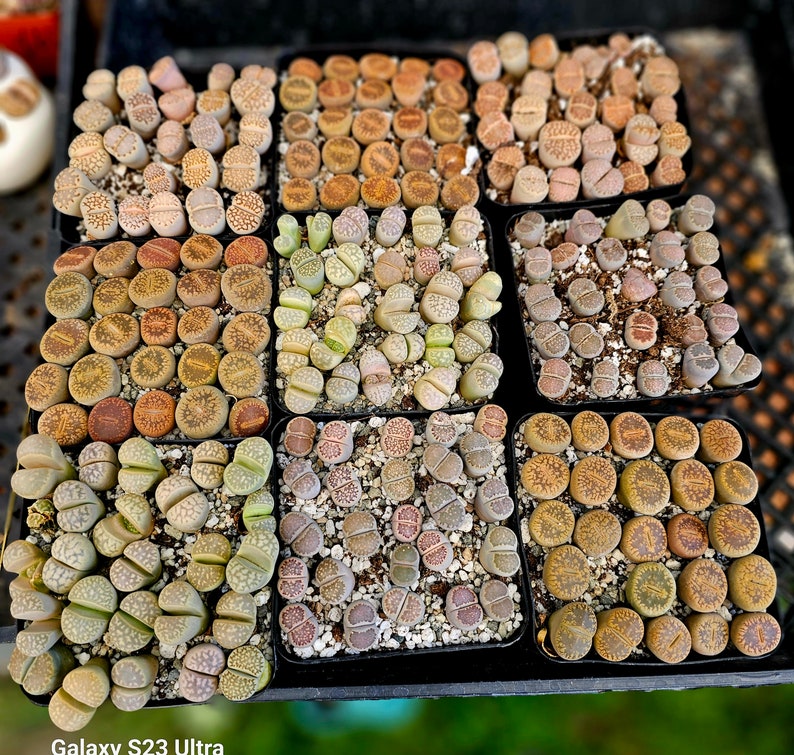
Summer
Summer signals dormancy period for Lithops as they rest through the dry season. Watering may cease entirely and disturbance minimized. Their dormant appearance mimics dormant winter conditions in nature.
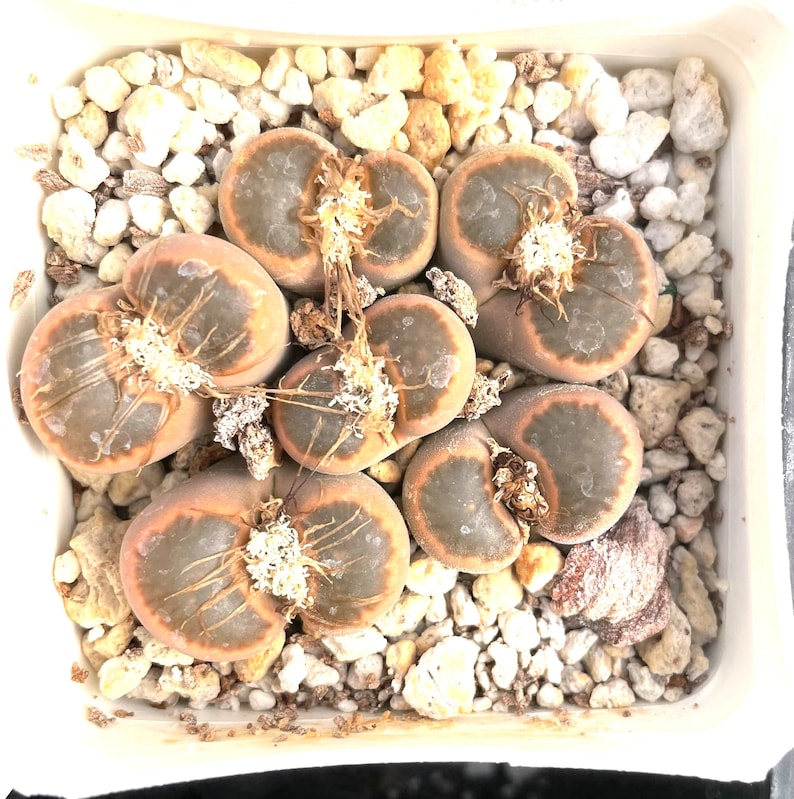
This yearly rhythm prepares Lithops to flower when seasonal rains return in autumn, perpetuating their lifecycle. With the right care matched to their growing and resting stages, Lithops delight through changing appearances cycle to cycle. This guide provides a baseline for understanding their habitual patterns.

When do Lithops split?
Lithops typically embark on their leaf splitting journey during late spring or early summer, marking the conclusion of their primary growth period. The exact timing of this process can vary significantly based on factors such as lithops species and environmental conditions. Some lithops varieties may initiate leaf splitting as early as April, while others might exhibit this phenomenon in June.
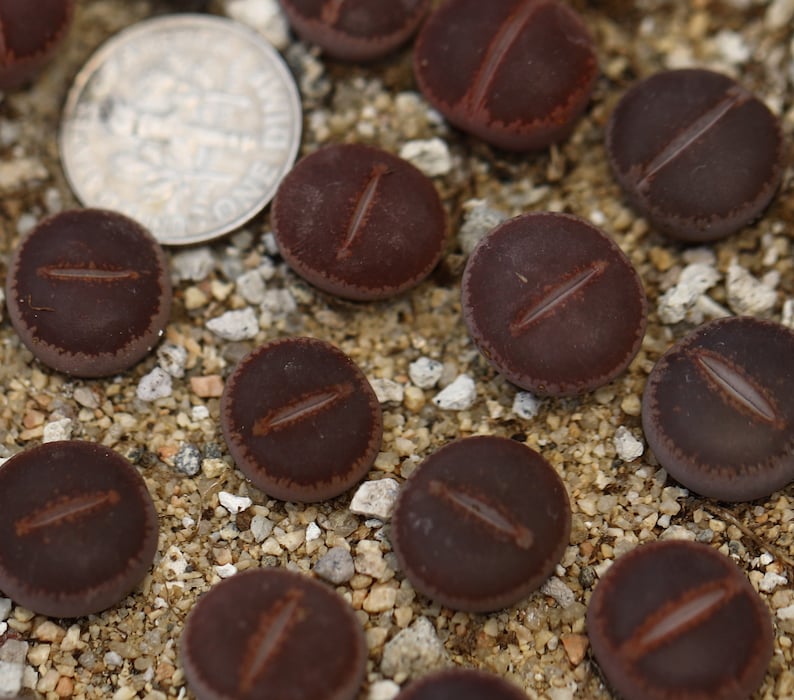
Development of Inner Leaves
Leaf splitting occurs once the inner leaves have fully developed and enlarged within the confines of the outer leaves. This delicate balance between new growth and existing foliage sets the stage for the subsequent stages of leaf splitting.
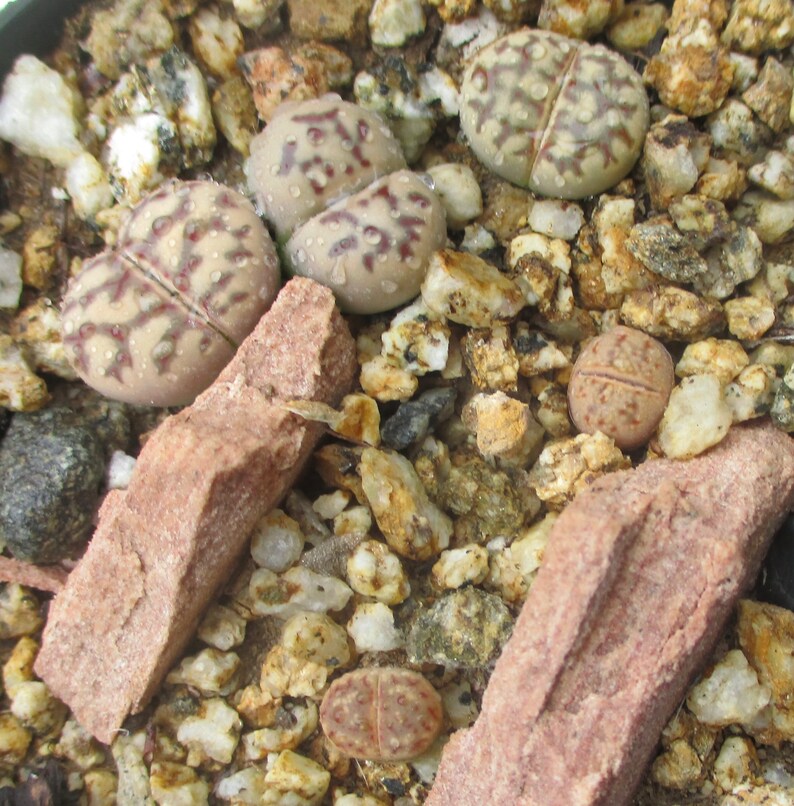
Visual Clues: Wrinkling and Color Change
A fascinating precursor to leaf splitting is the visible transformation of the outer leaves. As the inner leaves expand and prepare for detachment, the outer leaves may start to wrinkle and undergo changes in color. These alterations are signs that the outer leaves are becoming desiccated, a crucial step before the splitting process begins.
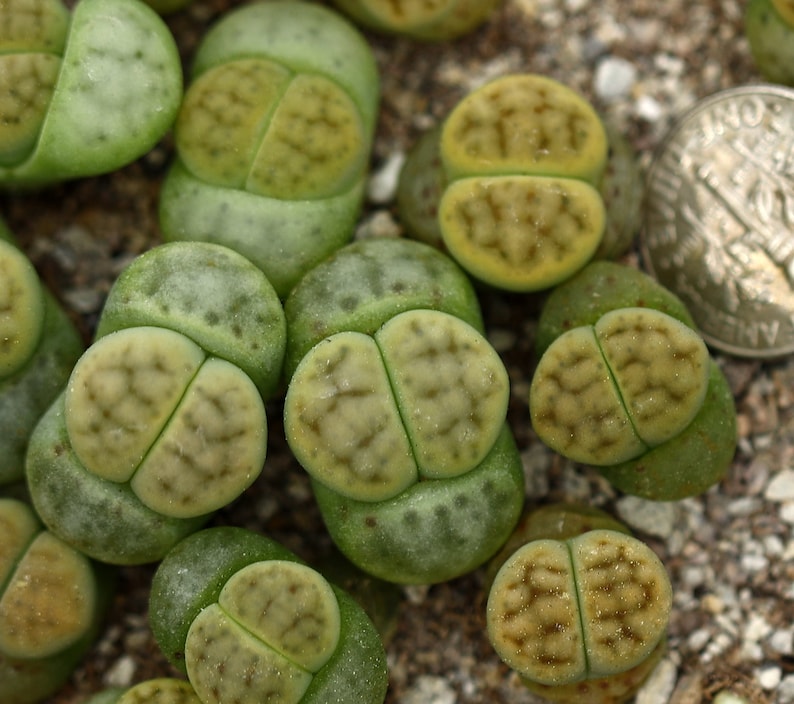
Progressive Widening of the Crease
Over the course of several days to weeks, the crease or split between the outer leaves widens progressively. This gradual expansion is a testament to the steady growth of the new leaves within. As the new growth gains momentum, the outer leaves continue to prepare for their eventual detachment.
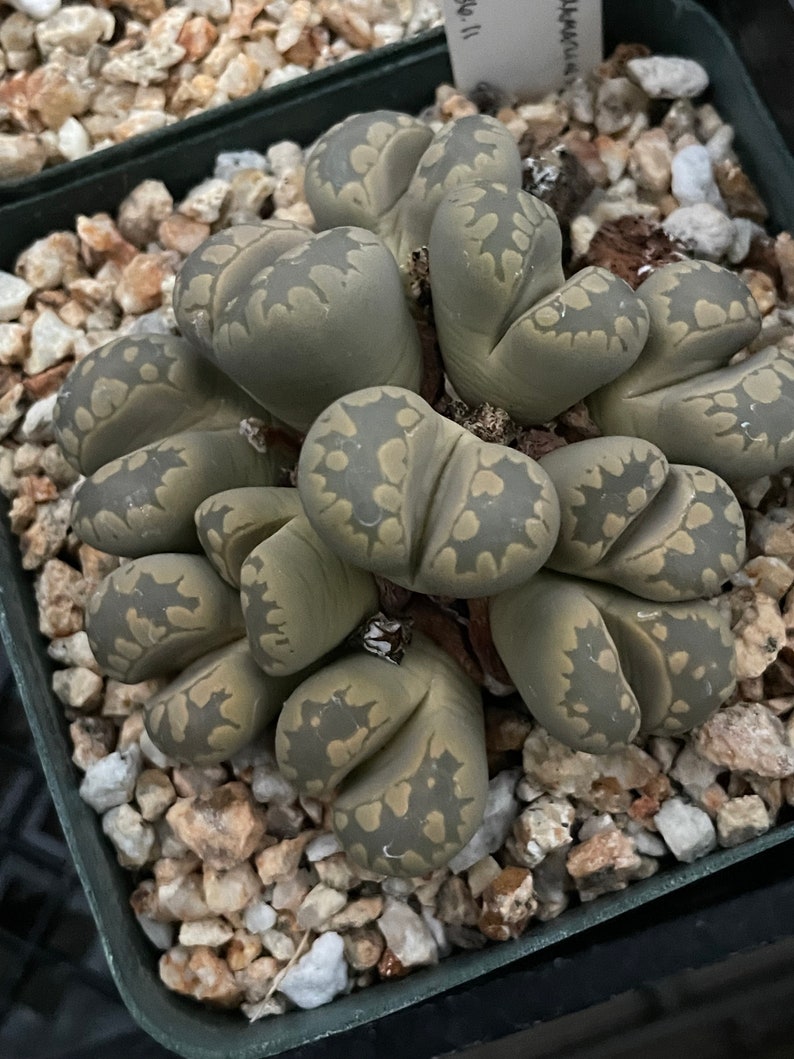
The Grand Revelation: Detachment of Outer Leaves
The pinnacle of the leaf splitting process is the detachment of the papery husks of the old outer leaves. This moment reveals the perfectly formed new leaves that have been developing within. The contrast between the withered outer leaves and the vibrant new growth showcases the resilience and ingenuity of lithops.
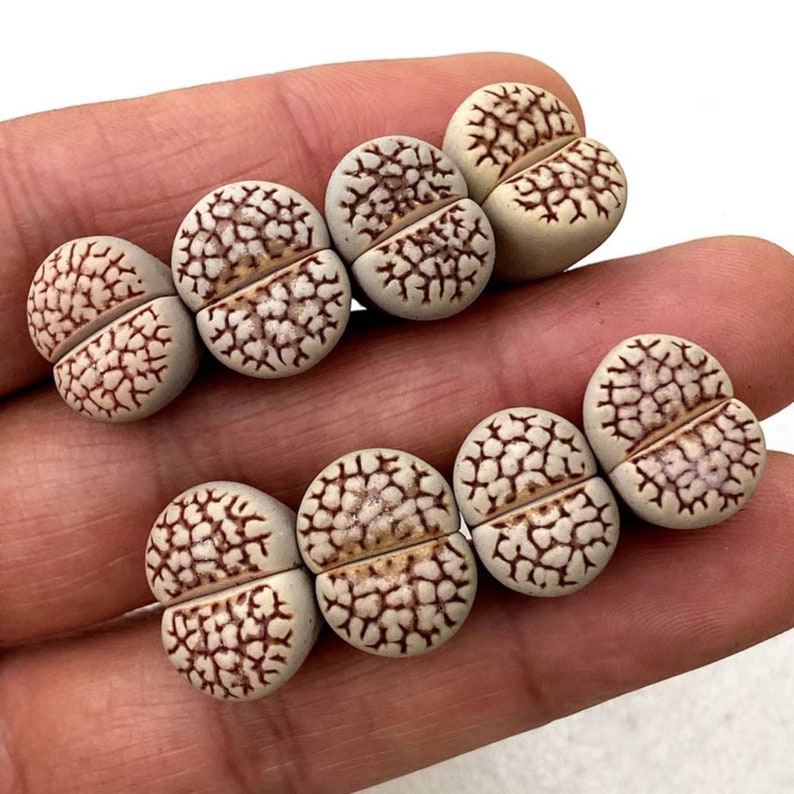
Environmental Factors and Their Role
Lithops’ response to leaf splitting is influenced by various environmental cues. Factors such as warmth, light levels, and the moisture content of the soil play pivotal roles in triggering this natural phenomenon. Understanding the interplay of these elements can empower succulent enthusiasts to optimize their care routines and facilitate successful leaf splitting.
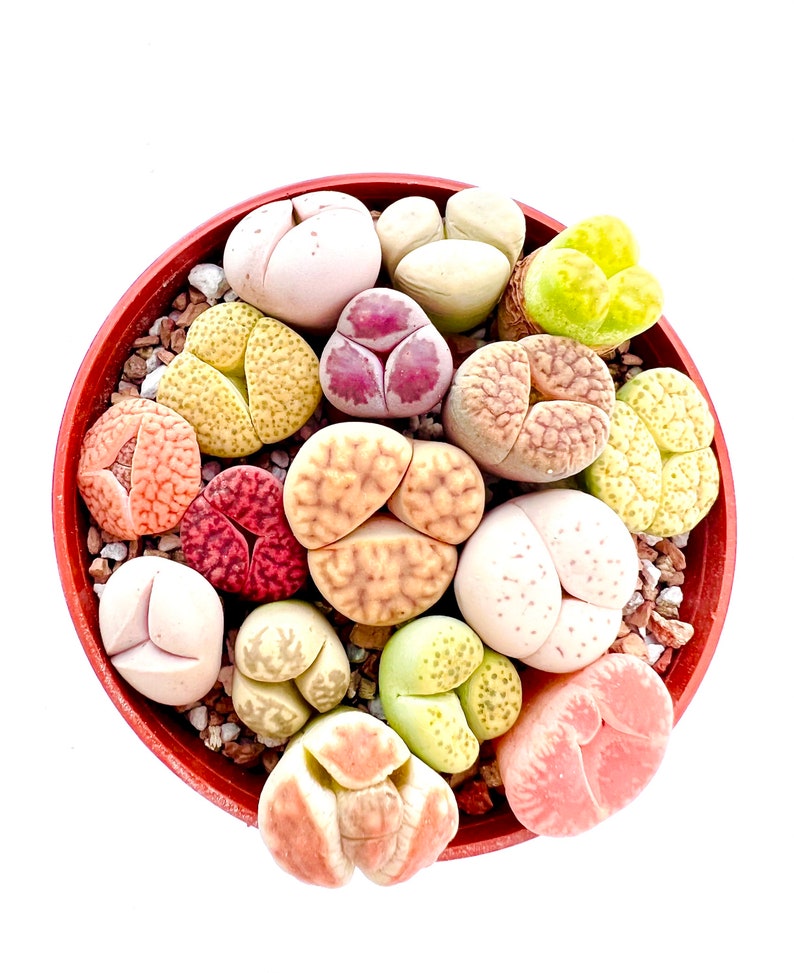
Care Considerations for Optimal Leaf Splitting
Proper care is integral to ensuring the successful leaf splitting of lithops. During the late spring, when the splitting process is underway, it’s crucial to avoid overwatering. Excess moisture in the soil can lead to issues such as rot, jeopardizing the health of the plant during its active growth phase.

Where to Buy Succulents Online

